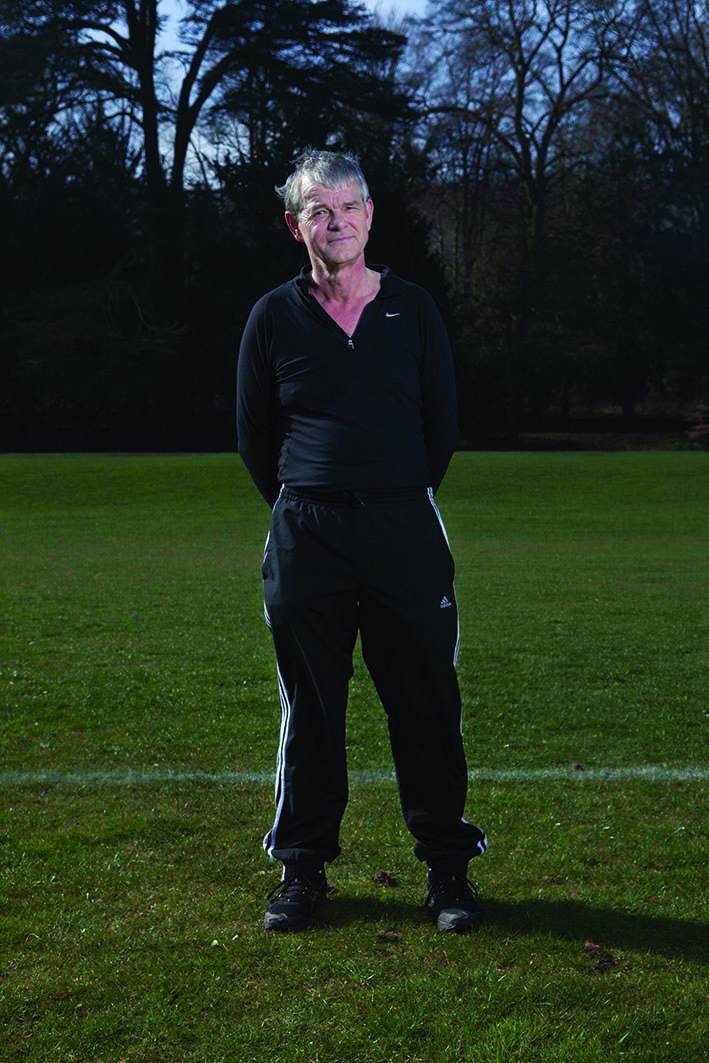
Photograph of the author taken by Amy Walters, photographic student, as part of her study of older people who exercise.
Jogging twice weekly for over 30 years means that I should have covered approximately 18 000 kilometres of ground. I have always wondered whether my solitary runs have given me any health benefit. Recent research suggests that by doing these gentle jogs I have gained an extra 6 years of life expectancy. Also moderation seems key as the study found that those exercising less than 1.5 hours a week on three separate occasions had better outcomes than those on more vigorous regimes. But how can one sustain such a lonely, isolated activity?
Running 30 years ago I found it easy to keep up the twice-weekly routine. Doing any more and I felt overtired; any less and I lost some mental equilibrium. Listening to the same music album (Peter Gabriel’s Greatest Hits) and traversing the same jogging route resulted in a calm and meditative mental state lasting for a couple of days. This passive approach to running has been compared to ‘The Slow Movement’ in Italy where one savours the carefully prepared slow meal and the running equivalent is to notice the weather, the environment, and your natural bodily rhythms. It was also cheap and quick to do, and could fit in with family routines. My wife also ran but on separate occasions so we could share child care. However, we both encouraged each other to keep running in those overcast, cold, wet winter days. Having a running buddy can help keep one motivated. I did not join a running club or upskill to longer races as I considered myself a slow everyman-type runner.
So mood needs, joint aches, and obsessive routine kept me at this activity, but since 2010 I have taken up with parkrun (www.parkrun.org.uk/), a free countrywide running group activity that caters for solitary and groupie runners alike. This web-based organisation provides an identification barcode to take to Saturday early-morning park runs where one jogs 5 kilometres (around 3 miles, my usual length) with all and sundry from children, dogs, and babies in pushchairs. As you pass the finish line your barcode is scanned and linked to the time recorded and later the run results are sent to you by e-mail. This is a group activity where you can meet like-minded people to chat with over a cup of coffee or simply return home to everyday chores. Some have started running using The Couch to 5k app available on the NHS website.2 You simply download the podcast onto your phone or MP3 device and it guides you through a 9-week programme from walking to running.
I have simplified my personal running goals to just getting around without stopping and avoiding falling or tripping, as, aged 60, limbs can break more easily. Pounding the uneven pavements does not seem to harm one’s knees unlike sports such as football or weightlifting. Some people even believe the furless human body is designed to run, which is the way we ran down our exhausted, overheated, wool-coated animal prey in primeval times.3 Nevertheless, running does not suit everyone but it is a simple, free, and easy way to exercise. Organisations such as parkrun can make it less isolated and more enjoyable but it’s best to tackle your first parkrun only if you can jog continuously for 30 minutes. Otherwise, why not come and simply watch?
REFERENCES
- 1.Schnohr P, Marott JL, Lange P, Jensen GB. Longevity in male and female joggers: the Copenhagen City Heart Study. Am J Epidemiol. 2013;177(7):683–689. doi: 10.1093/aje/kws301. [DOI] [PubMed] [Google Scholar]
- 2.NHS choices. The couch to 5K nine-week plan. http://www.nhs.uk/Livewell/c25k/Pages/couch-to-5k-plan.aspx (accessed 4 Jul 2014)
- 3. Persistence hunting. http://en.wikipedia.org/wiki/Persistence_hunting (accessed 9 Jul 2014)


